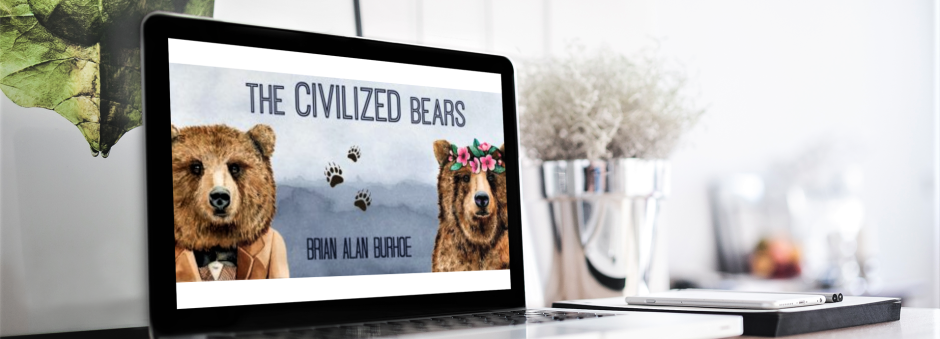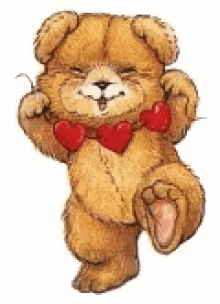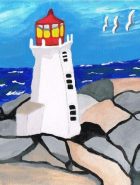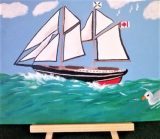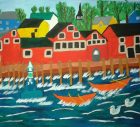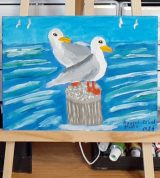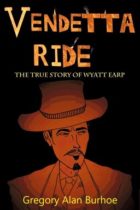Spirit Bears: “Is the Spirit Bear a Polar Bear?”
What are Spirit Bears?
“Of all the creatures, Bear is closest to Man. Yet it seems there is little place for him now.” Chief Dan George
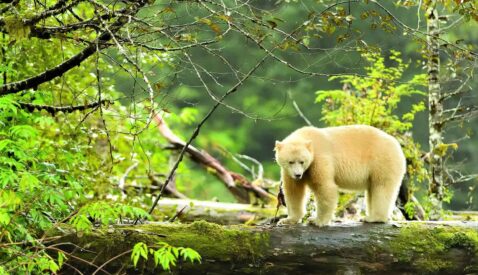
What are Spirit Bears? The rarest bears on Earth!
Hidden away in the depths of the Great Bear Rainforest, Spirit Bears move like ghosts through the misty temperate forest. Under majestic 1000-year old red cedar trees, through small clear streams, reaching the primordial rocky fjords that fringe the roaring Pacific waters, these mystic white bears snuff and explore…
The Great Bear Rainforest stretches over 250 miles along the foggy Pacific coast of British Columbia. And is named after the mysterious Spirit Bear (or Ghost Bear), known to the local First Nations as Moksgm’ol and to scientists as the Kermode Bear.
This rare and beautiful creature has been a sacred symbol for generations of First Nations folk. Including the traditional Tsimshian people.
Best estimates are that there are still 400 Spirit Bears alive today, with less optimistic naturalists saying the true number may be a quarter of that number. Mostly due to big game hunting and poaching.
In 2006, the Spirit Bear was adopted as the official Provincial Mammal of British Columbia.
“Spirit Bears hold a fascination for many bear watching enthusiasts. That’s due to their long, mystical history among the Tsimshian people, who believed them to be sacred and hold supernatural powers. But what causes these beautiful animals to have white fur instead of black?” asked Marissa Ellis-Snow in a recent article.
Here, from one of our favourite Nature writers is a Guest Blog Post:
“The Tsimshian People and the Sacred Spirit Bear” by Marissa Ellis-Snow
What is a Spirit Bear? The Spirit Bear is a genetic variant of the Black Bear, making it much revered amongst bear watching enthusiasts. Biologists describe it as a natural phenomenon called “Kermodism.” And it has more in common with human genes than you may realize.
What turns Spirit Bears white?
Many people speculate as to whether its white fur is due to it being albino or even a type of polar bear. In actual fact it’s the recessive mutation gene MC1R that causes the change in colour. Which is the same gene associated with humans born with red hair and pale skin.
In order to be born with its distinctive cream-coloured fur, the animal must inherit the mutation from both of its parents. Sometimes the parents will carry the gene but not be white coated themselves, making it common for them to be the product of two black-furred parents.
Spirit Bears: Areas of Origin
Statistics of Spirit Bear births vary greatly, depending on where they’re born. The British Columbia mainland coast sees only one in every 40 to 100 black bears being born with white fur. But within the Great Bear Rainforest the stats are much higher.
In particular, Princess Royal Island is one of their major habitats. It sees one in every ten Black Bears born with the mutation. Directly north on Gribbell Island, one in three are born with it. For this reason Gribbell is very popular with bear watching enthusiasts hoping for a sighting.
Mutation Origin: Glacial Bears
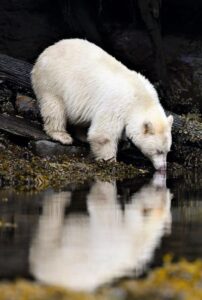 It’s not known where Kermodism originated. But there are many theories surrounding this natural phenomenon.
It’s not known where Kermodism originated. But there are many theories surrounding this natural phenomenon.
The “Glacial Bear” hypothesis suggests that Kermodism exists as a remnant adaptation of the last great Ice Age of 11,000 years ago. At that time modern British Columbia was still covered by part of the continental ice sheet.
Much like the adaptation of white coats that Polar Bears have evolved in order to camouflage in their surroundings, the glacial bear hypothesis suggests that this is how Kermodism also began. However, this theory raises questions of its own. Such as why the white fur mutation continues to the present day when the bears live in the rich green forests, no longer needing white camouflage.
Some scientists speculate that their white fur has continued to be a trait due to the advantage it has given them for fishing. Recent research has indicated that during daylight they are able to catch salmon in a third of their attempts. While their black-coated siblings only manage success a quarter of the time. They think that, to the fish, the Spirit Bears blend in with the whitewater rapids.
Whether or not these theories reveal the true origins of Kermodism is still unproven.
The Tsimshian People
The Tsimshian, who are also known as the Chimmesyan, lived on the mainland and islands that are now British Columbia and Alaska. The areas were split into the Skeen and Nass Rivers and the Milbanke Sound. And each had its own Tsimshian dialect. The Tsimshians along the Nass River spoke Niska. Those along the lower Skeena and the coast spoke coastal Tsimshian. And the natives found along the upper Skeena spoke Kitksan.
First Nations Clans
The Tsimshian were divided into clans, lineages and tribes. Allied tribes included the Metlakatla and Gitga’at. The coastal Tsimshian and Niska were separated into four major clans, while the Kitksan was divided into three. These clans were then arranged into lineages, which were determined by their descent traced through their maternal line.
Tribes would then consist of several of these lineages. And each lineage would work together as an independent unit with its own designated areas for hunting and gathering, along with their own heraldic crests and chiefs. The chief of the highest-ranking lineage became chief of the nation. Together they would engage in activities from festive ceremonies to valiant warfare.
Life & Lifestyle
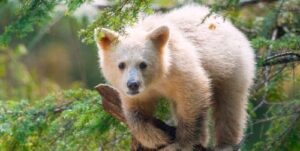
According to southern Tsimshian oral history, the clans originally lived inland. But after an outbreak of disasters struck the people, a chief led a migration away from the cursed land to the Pacific coast. They met a Spirit Bear who guided them to the place where they built their first new village. Great prosperity followed for generations.
The Tsimshian mostly relied on fishing during the summer months. That’s when the salmon migrate to the Great Bear Rainforest for breeding. The Tsimshian would trap both these and candlefish, a species of smelt. They peacefully competed with the wild Brown, Grizzly and Spirit Bears of the area for the fish.
In order to demonstrate their wealth, the Tsimshian built permanent winter houses made of carved and painted wood. The people were surrounded with such an abundance of natural land and marine resources they had no need to be nomadic.
Other resources they used for economic prosperity and sustainability included halibut, seals, otters, whales and cod from the ocean. Shell and seaweed from the intertidal zones. And berries, lupine roots, red cedar, fir and yew trees for house building. They would travel occasionally for trade and would switch between summer and winter camps. But the distances covered would usually be short.
And they told stories of Moksgm’ol, the Spirit Bears.
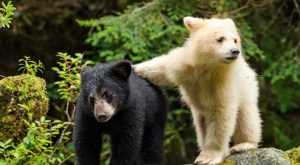
Bear Cubs: White Spirit Bear cub with black sibling play together in the Great Bear Rainforest.
Touching Spirit Bears: Stories & Legends
The Tsimshian people tell stories of a long-ago time “when snow and ice covered the land, rarely melting.”
They believe that the Creator gives one out of ten Spirit Bear cubs white fur to remind Humankind of the time when glaciers had covered their ancestral world. And when many other species of animals had been white-coated.
They also believe these unusual bears have supernatural powers, which is how they got their name. Stories are told of Spirit Bears leading lost children back to their homes. And of guiding people to strange enchanted lands. Spirit Bears are a link between our real danger-filled world and places of love and peace. Touching a Spirit Bear, say the old storytellers, will give you insight into the the eternal Circle of Life.
The Tsimshian shared their territory with the rare white species for centuries. In more recent times they struggled to protect the bears from sport hunters and poachers. Spirit Bears are still held in high esteem by locals and visitors and a sighting of the ghost bear is as exciting as whale watching.
And see this popular post: CANADIAN INDIGENOUS ART HISTORY: Totem Poles, Thunderbirds, Eagle, & the Mother Wolf
Are you wondering what Chief Dan George meant by “Bear is closest to Man”?
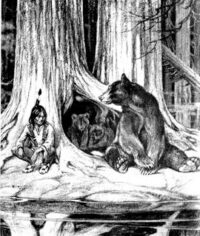 If so, you’ve got to read my popular short story “THE BOY WHO WAS RAISED BY BEARS.” A Traditional Native American Animal Story & Folktale Retold.
If so, you’ve got to read my popular short story “THE BOY WHO WAS RAISED BY BEARS.” A Traditional Native American Animal Story & Folktale Retold.
Talking bears and human children adopted and raised by loving mama bears are common story themes in both Old and New World oral traditions. Even J R R Tolkien wrote about both Beowulf and “Bear’s Son Tales in European folklore.”
“Loved this beautiful Animal Tale. Perfect!” Free to Read ==> CLICK HERE THE BOY WHO WAS RAISED BY BEARS
NATIVE AMERICAN LEGEND: Wild Woman of the Woods – Woman of the Mask
June is National Indigenous History Month, a time to honour and celebrate the heritage, traditions and cultures of First Nation, Inuit and Métis peoples in Canada. Locally, October is Mi’kmaq History Month.
Marissa Ellis-Snow is a talented wilderness writer living in the United Kingdom. She has written extensively about bears. She says: “If you’re looking for bear watching tours, Naturetrek specialises in expert-led natural history and wildlife tours worldwide to see Brown Bears, Polar Bears, Grizzly Bears and other species. Naturetrek brings 39 years of experience to polar expeditions and tours to other spectacular regions on Earth.”
Chief Dan George’s “Bear” quote is from his THE BEST OF CHIEF DAN GEORGE, Hancock House Publishers, Surrey, BC, 2004, reprinted 2017. Essential reading.
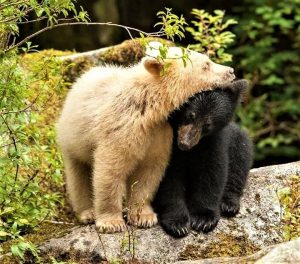
What are Spirit Bears? Sacred White Bears & Native American Legends.
TAGS Animal stories, bear stories, Canada, Canadian folk tales, ghost bears, Gitga’at Nation. Indigenous folk tales, kermodism. Moksgm’ol, bee swarm simulator, Native American bear legends, spirit bears, touching spirit bear, Tsimshian. What are Spirit Bears, what turns spirit bears white, wildlife. Updated April 16, 2025.
